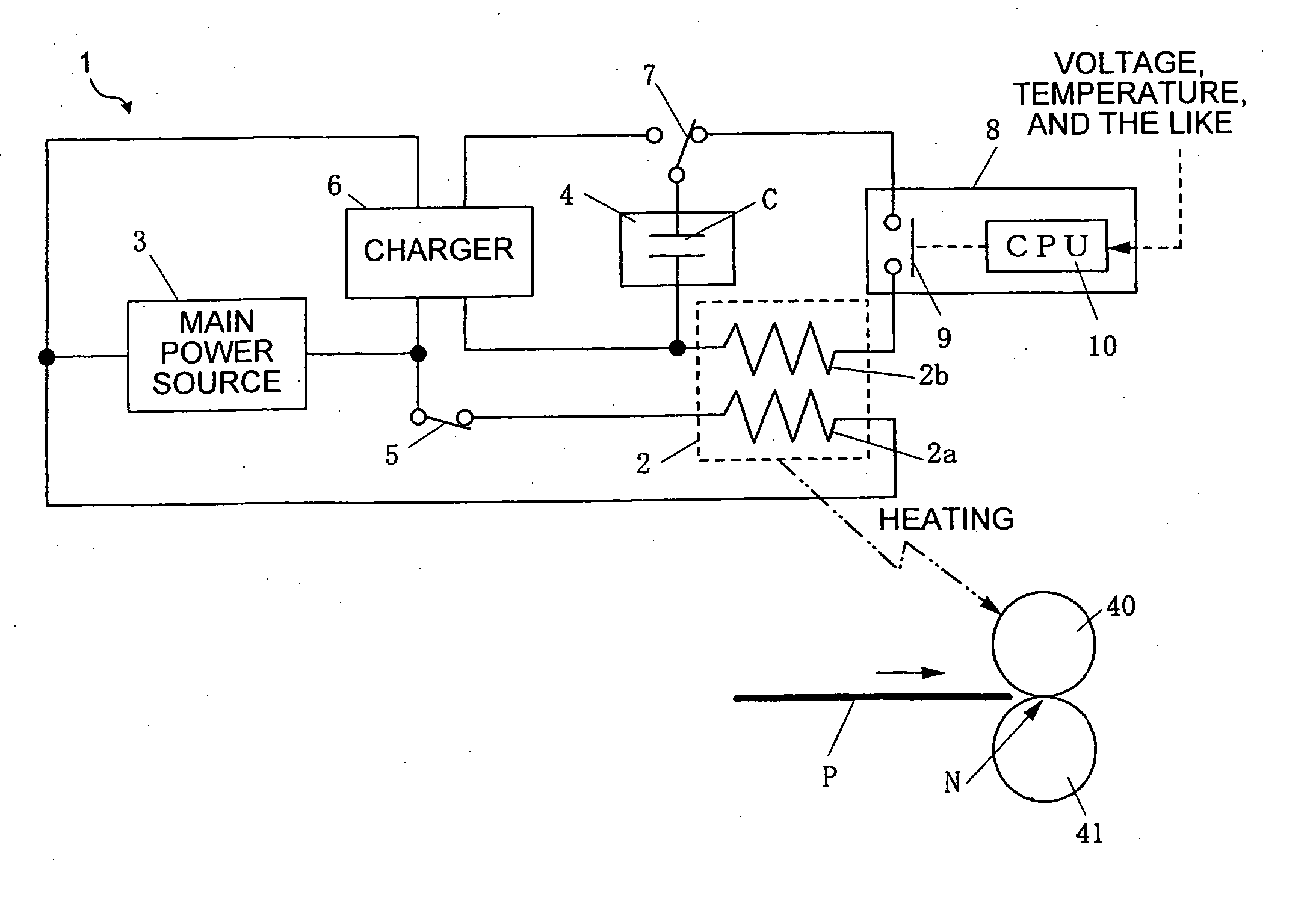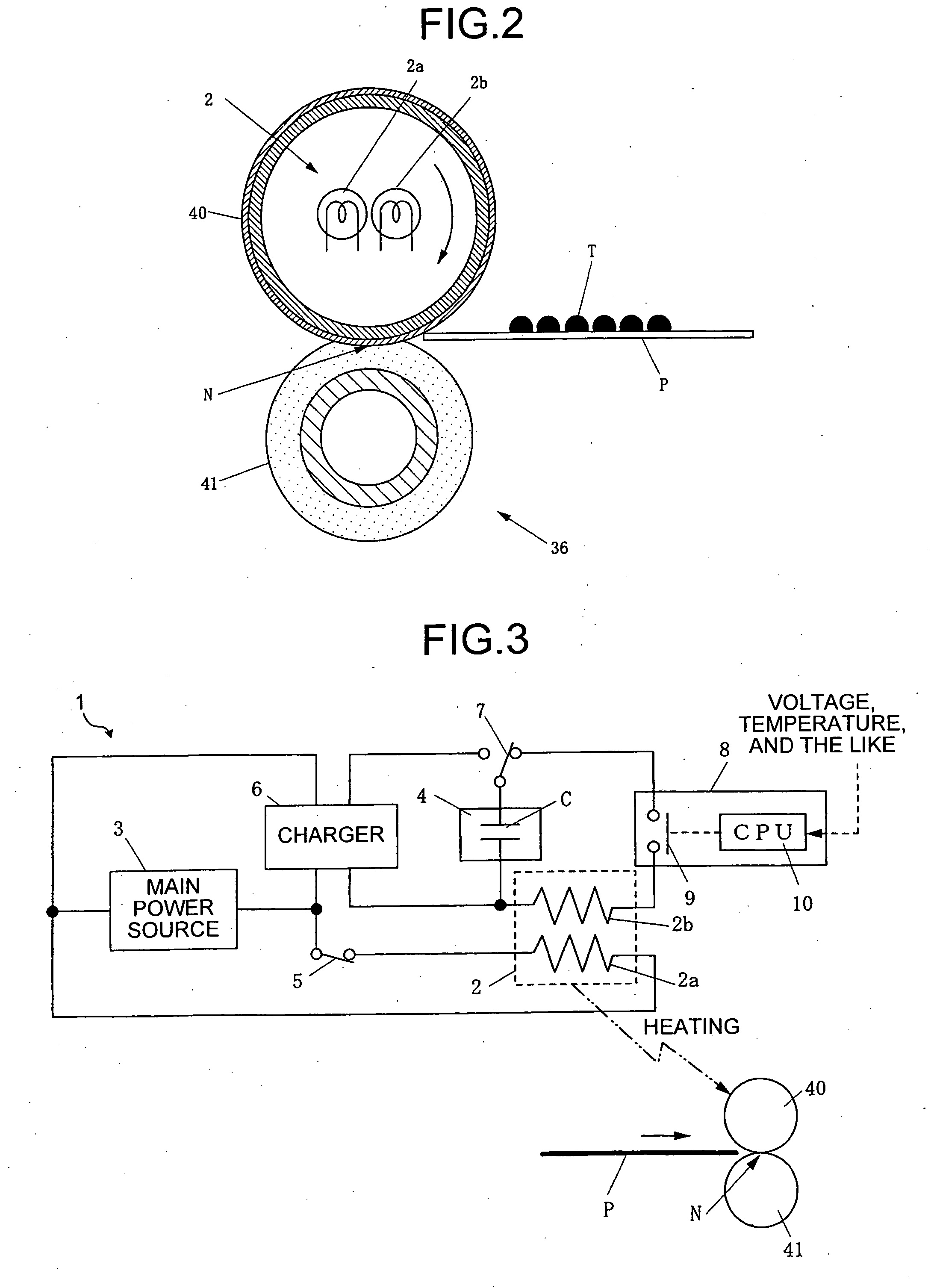Image forming apparatus
a technology of forming apparatus and fixing device, which is applied in the direction of electrographic process apparatus, instruments, optics, etc., can solve the problems of increasing the thermal capacity of the apparatus, affecting the usability of the apparatus for users, and requiring a certain amount of power supply to the fixing devi
- Summary
- Abstract
- Description
- Claims
- Application Information
AI Technical Summary
Benefits of technology
Problems solved by technology
Method used
Image
Examples
Embodiment Construction
[0027] Exemplary embodiments of the present invention are explained below with reference to accompanying drawings.
[0028]FIG. 1 is a cross sectional view of an image forming apparatus such as copy machine and printer of electrophotographic system according to the present invention. The image forming apparatus of the present embodiment is capable of feeding continuously, for example, 100 sheets of paper (75 copies per minute (CPM)). The image forming apparatus is composed of, in its main structure, a reading unit 11 that reads a document, an image forming unit 12 that forms an image, an automatic document feeder (ADF) 13, a paper delivery tray 14 that stacks documents sent out of the ADF 13, a paper feeder 19 provided with paper feeding cassettes 15 to 18, and a paper delivery tray 20 that stacks recording paper. For example, the maximum feeding capacity of paper that the ADF 13 can feed is 100 sheets of paper, and a reading time taken for the reading unit 11 to read 100 sheets of do...
PUM
 Login to View More
Login to View More Abstract
Description
Claims
Application Information
 Login to View More
Login to View More - R&D
- Intellectual Property
- Life Sciences
- Materials
- Tech Scout
- Unparalleled Data Quality
- Higher Quality Content
- 60% Fewer Hallucinations
Browse by: Latest US Patents, China's latest patents, Technical Efficacy Thesaurus, Application Domain, Technology Topic, Popular Technical Reports.
© 2025 PatSnap. All rights reserved.Legal|Privacy policy|Modern Slavery Act Transparency Statement|Sitemap|About US| Contact US: help@patsnap.com



